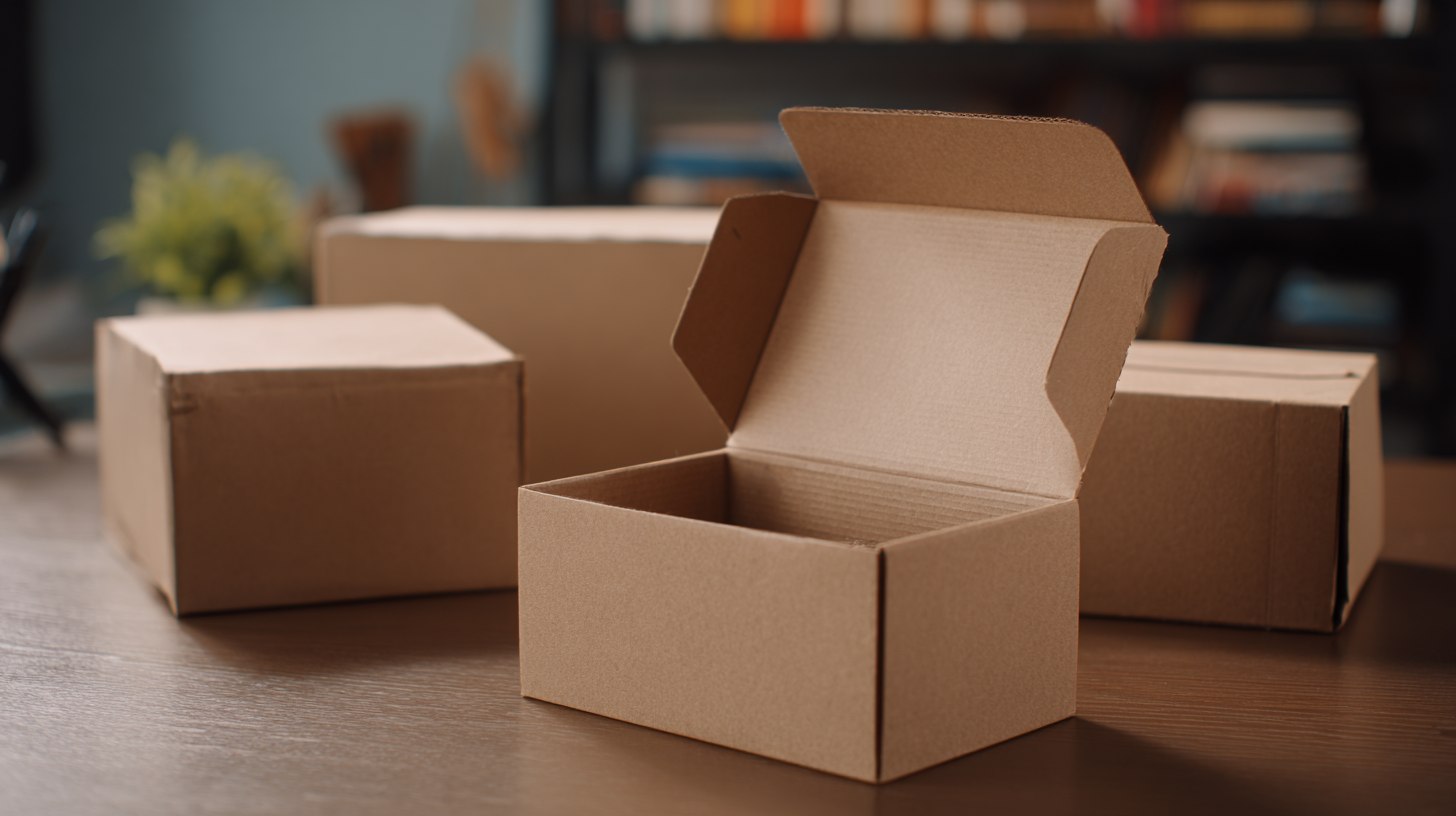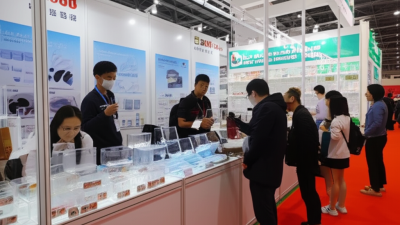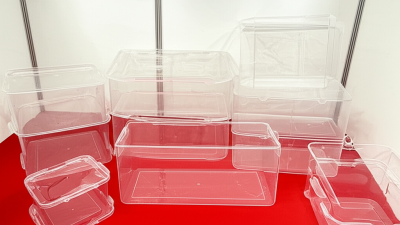In today's rapidly evolving marketplace, businesses are increasingly seeking sustainable solutions to meet the demands of environmentally conscious consumers. One innovative approach that has gained significant traction is the use of cardboard packaging boxes. These versatile and eco-friendly containers not only reduce environmental impact but also enhance brand image and customer satisfaction. As companies look for ways to unlock sustainability, cardboard packaging boxes offer a practical and responsible choice that aligns with modern values. By embracing these sustainable options, businesses can not only streamline their operations but also contribute positively to the planet. This article will explore the myriad benefits of adopting cardboard packaging boxes, illustrating how they can serve as a catalyst for sustainable practices and foster long-term success in an increasingly competitive landscape.

Sustainable cardboard packaging has emerged as a game changer for businesses looking to enhance their environmental responsibility while boosting their bottom line. A report by Smithers Pira indicates that the global sustainable packaging market is forecast to reach $500 billion by 2027, growing at a CAGR of 5.1%. This trend is largely driven by consumer demand for eco-friendly products. Companies adopting sustainable cardboard packaging can not only meet this demand but also differentiate themselves in a crowded marketplace.
The benefits of utilizing sustainable cardboard packaging extend beyond consumer appeal. Cardboard is primarily made from recycled materials, and its production emits considerably less CO2 compared to plastic alternatives. According to a study by the Environmental Protection Agency (EPA), recycled cardboard can reduce greenhouse gas emissions by up to 60%. Moreover, transitioning to cardboard packaging can significantly lower shipping costs due to its lightweight nature, which leads to reduced fuel consumption during transportation. By investing in innovative cardboard packaging solutions, businesses can effectively contribute to a greener planet while reaping the economic advantages of sustainability.
| Feature | Benefit | Impact on Business |
|---|---|---|
| Recyclability | Reduces waste and promotes circular economy | Enhances brand reputation among eco-conscious consumers |
| Biodegradable Materials | Decomposes naturally without harming the environment | Attracts new customers looking for sustainable options |
| Lightweight Design | Reduces shipping costs and carbon footprint | Improves logistics and overall profitability |
| Customizable Options | Allows for brand differentiation and creativity | Enhances customer experience and loyalty |
| Cost-Effectiveness | Lower material costs compared to traditional packaging | Increases profit margins and competitive edge |
Innovative cardboard packaging designs are increasingly being recognized as a vital component of enhancing brand identity. According to a report by Smithers Pira, the global market for packaging is projected to reach $500 billion by 2025, with environmentally friendly materials leading the charge. Businesses that incorporate unique, sustainable packaging not only showcase their commitment to the environment but also set themselves apart in a crowded marketplace.
Custom designs can evoke emotional responses, creating a memorable unboxing experience that resonates with consumers.
Moreover, a survey conducted by Nielsen revealed that 66% of global consumers are willing to pay more for sustainable brands. This statistic underscores the importance of aligning packaging choices with brand values. By leveraging innovative cardboard designs, companies can communicate their commitment to sustainability while reinforcing their brand narrative.
Whether through creative shapes, eco-friendly inks, or interactive elements, these packaging solutions not only enhance visual appeal but also forge a deeper bond with environmentally conscious customers, ultimately driving loyalty and sales.
As businesses increasingly recognize the importance of sustainability, eco-friendly packaging solutions are emerging as a key strategy to reduce environmental impact. According to a report by Smithers Pira, the global market for sustainable packaging is projected to reach $456 billion by 2024, driven by consumer demand for environmentally responsible products. Cardboard packaging, in particular, is gaining traction due to its recyclability and biodegradable properties, allowing businesses to minimize their carbon footprint while maintaining competitive advantage.
One effective tip for businesses looking to adopt sustainable practices is to source materials from certified suppliers who adhere to responsible forestry practices. This not only ensures that the cardboard is produced sustainably but also promotes a circular economy. Another strategy is to design packaging that uses fewer materials without compromising quality. Reports from the Ellen MacArthur Foundation indicate that reducing material use in packaging can lead up to a 30% decrease in greenhouse gas emissions, showcasing the dual benefits of cost savings and environmental responsibility.
Utilizing innovative designs like void fill and custom-cut boxes can further enhance sustainability. By optimizing the size and shape of packaging, companies can decrease excess material usage and minimize shipping emissions. Implementing these strategies not only positions businesses as eco-friendly leaders but also aligns with the growing global movement towards sustainable consumerism.
In today's environmentally conscious world, businesses are increasingly recognizing the benefits of using cardboard packaging. Not only does it reduce waste, but it also offers cost-effective strategies for enhancing supply chain efficiency. By integrating cardboard packaging, companies can achieve sustainability while simultaneously lowering operational expenses.
One effective tip for implementing cardboard packaging is to conduct a thorough assessment of your current packaging materials. Identify areas where cardboard can replace less sustainable options without sacrificing quality. This shift not only reduces environmental impact but can also lead to significant cost savings through bulk purchasing and material reduction.
Additionally, consider optimizing your packaging design to minimize material use. Focusing on custom sizes and shapes can reduce cardboard waste and improve shipping efficiency. Implementing a streamlined packaging process using cardboard can enhance workflow and speed up fulfillment times, ultimately boosting customer satisfaction. By marrying innovative design with sustainable materials, businesses can unlock new opportunities for growth while contributing to a healthier planet.

As consumers increasingly prioritize sustainability, businesses must adapt their packaging to meet these rising green demands. Today's shoppers are looking for eco-friendly solutions, with a staggering 82% willing to pay more for products that come in sustainable packaging. This trend is even more pronounced among younger generations, such as Gen-Z, where the number rises to 90%. This shift in consumer behavior indicates a significant opportunity for brands to engage with environmentally conscious customers by embracing innovative packaging materials, such as cardboard boxes that are both recyclable and biodegradable.
Moreover, the growth of the green packaging market is being driven not only by consumer preference but also by regulatory pressures. Companies must navigate a landscape where sustainability is no longer just a trend but a necessity. Implementing sustainable packaging solutions can significantly reduce a brand's environmental footprint and enhance its market appeal. As the global market for sustainable flexible packaging is projected to surge, businesses that prioritize eco-friendly practices are likely to find greater success in attracting and retaining customers who value environmental responsibility.






